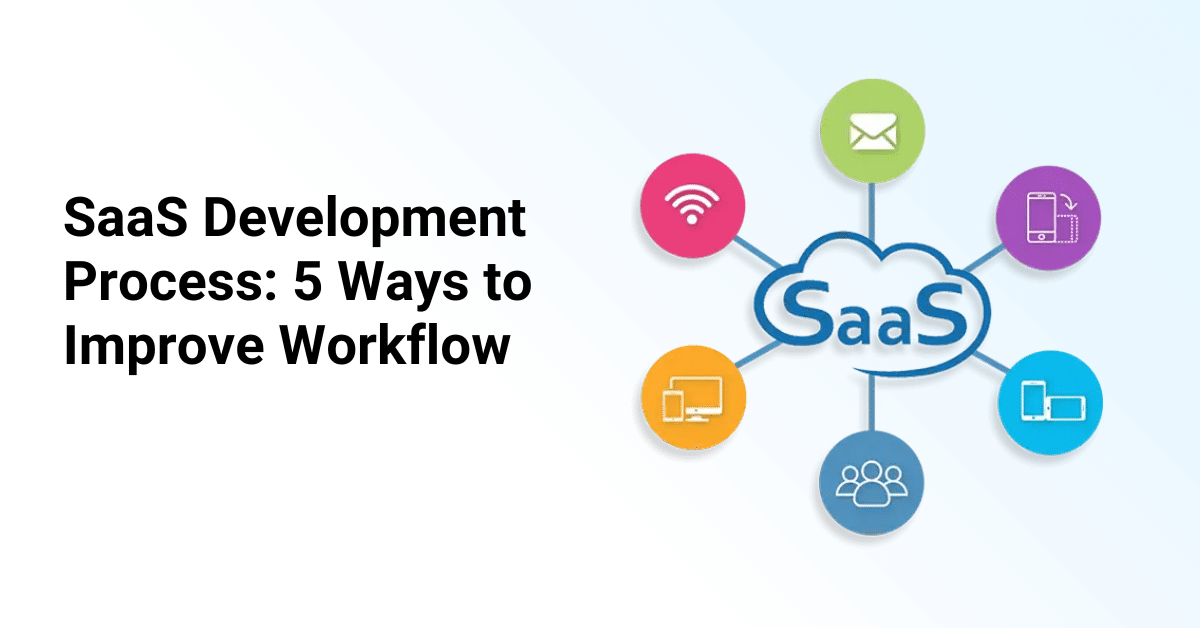SaaS Development Process
Software as a Service (SaaS) development is becoming increasingly popular due to its scalability and low cost. As businesses look for ways to maximize their workflow, understanding the proper SaaS development process is essential. In this article, we will discuss five ways to improve your organization’s workflow when developing a SaaS product. With the right strategies in place, you can create an efficient, streamlined development process that meets your business needs.
Tip 1: Automate Tasks
One of the most effective ways to improve the workflow in your SaaS development process is by automating tasks. Automating repetitive and time-consuming tasks can significantly reduce workload, increase productivity and accuracy, and minimize human error.
Automating tasks is a vital aspect of workflow management. By automating repetitive and time-consuming tasks, developers can focus on more complex projects that require their expertise. This approach increases productivity and efficiency in the development process, enabling companies to deliver products faster without compromising quality.
Automation also reduces the possibility of human error. Developers are prone to mistakes when working on repetitive tasks for long periods. Automating these processes minimizes the risk of errors occurring while freeing up resources for other essential activities. Moreover, automation allows developers to manage multiple projects simultaneously, which helps prioritize workloads and meet deadlines.
In conclusion, automating repetitive and time-consuming tasks is a crucial step towards improving workflow in SaaS development. It saves valuable time and resources while reducing the possibility of errors occurring during the development process. By investing in automation tools and techniques, businesses can optimize their performance levels and achieve substantial growth over time while keeping their workforce motivated by allowing them to work on more creative solutions rather than tedious manual labor-intensive tasks.
Tip 2: Utilize Communication Tools
One of the most important aspects of software development is communication, especially when working with a remote team. Utilizing communication tools can help improve workflow and ensure everyone is on the same page. Announcement software, for example, can be used to make company-wide announcements or updates about projects.

Another useful tool is project management software that allows teams to collaborate on tasks and track progress. This not only helps keep everyone organized but also ensures that deadlines are met and nothing falls through the cracks. Additionally, video conferencing tools can help facilitate virtual meetings and allow team members to discuss issues in real-time.
Overall, incorporating communication tools into your SaaS development process can greatly improve workflow efficiency and enhance collaboration among your team members. It’s essential to choose the right tools that fit your specific needs while keeping in mind that effective communication is key for successfully completing any project.

Quick Setup, Easy to Use, and Many Integrations
Manage your product announcements from a single place and easily distribute them
across multiple channels.
Tip 3: Implement Quality Assurance
Implementing quality assurance is crucial to ensure that the software being developed meets the required standards. This process involves monitoring each stage of the development cycle, from design to deployment, and identifying any defects or issues that arise. Quality assurance should be a continuous process throughout the entire software development lifecycle.
One effective way to implement quality assurance is through automated testing. This involves using tools such as Selenium and Appium to run tests automatically and identify any errors in the software. Automated testing can save time and reduce errors, ensuring that the final product is of high quality.
Another important aspect of quality assurance is manual testing. While automated testing can catch many issues, it cannot replace human intuition and creativity when it comes to finding bugs or defects that may have been missed by automated tools. Manual testing should be used in conjunction with automated testing for optimal results.
Tip 4: Use Development Pipelines
Using development pipelines can greatly improve the workflow of a SaaS development process. Development pipelines are essentially a series of automated steps that code goes through before it can be deployed to the live environment. This allows for easier collaboration between team members and ensures that code is thoroughly tested before going live. One way to implement development pipelines is by using a changelog tool, which tracks all changes made to the codebase.

A changelog tool allows developers to keep track of what changes were made and when they were made. This helps with debugging and troubleshooting when issues arise in the future, as developers can easily see what has been changed since the last working version of the code. Additionally, using a changelog tool makes it easier for team members to communicate with each other about changes being made and ensures that everyone is on the same page.
Overall, using development pipelines and implementing tools like changelogs can greatly improve productivity and quality control in a SaaS development process. It helps minimize errors or conflicts arising from different team members working on different parts of the same project at once, while also making sure everything is up-to-date for smooth deployment.
Tip 5: Monitor Performance & Optimize
Monitoring performance and optimizing is an essential part of the SaaS development process. It helps in identifying the areas that require improvement and achieving better results with fewer resources. To monitor performance, you need to collect data on key metrics such as response time, uptime, and user engagement. This data can be used to identify bottlenecks in the system and optimize it accordingly.
Optimizing involves making changes to the system based on feedback from users or data analysis. This can include improving user experience by simplifying processes or adding new features that enhance functionality. It can also involve making technical improvements like upgrading infrastructure or programming language.
To ensure continuous improvement, it’s important to establish a cycle of monitoring, analyzing, optimizing, and testing regularly throughout the development process. This will help you stay ahead of any issues that may arise and ensure your product continues to meet customer needs long after its launch.
FAQ’s
What is SaaS Development?
Software-as-a-Service (SaaS) Development is a model of software delivery wherein a service provider hosts and maintains the application and makes it available to customers over the internet. This approach provides customers with an alternative to installing and maintaining software on their own systems. SaaS development typically involves the use of cloud computing platforms, such as Amazon Web Services, which offer scalability, reliability, and high availability.
How to develop a SaaS product?
In order to successfully develop a software-as-a-service (SaaS) product, one must first analyze and identify the necessary components for creating a successful product. This includes developing an understanding of the target customer base and the features that will be offered by the SaaS product to meet the needs of the customers. Additionally, it is important to build in scalability and reliability considerations given the dynamic nature of SaaS products.
Conclusion: Streamlining Dev Process
In conclusion, streamlining the development process can have many benefits, both in terms of cost savings and increased efficiency. It can also improve customer satisfaction and help to ensure that projects stay on budget and timeline. Companies should be sure to carefully evaluate their current process and identify areas for improvement before proceeding with any changes. Additionally, it is important to ensure that all stakeholders are aware of the planned changes and that appropriate resources are allocated accordingly.







